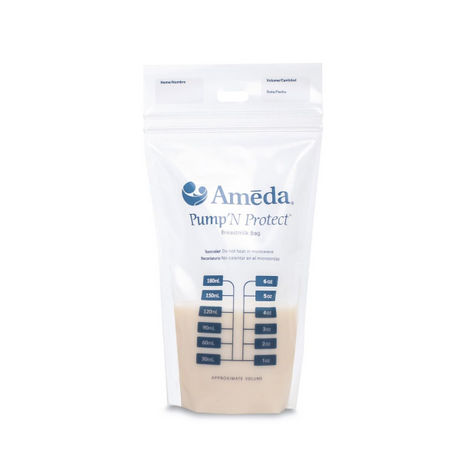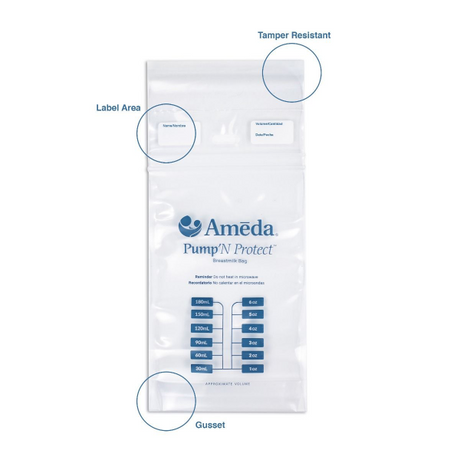Published:
Nursing premature babies offer unique challenges. When you give birth early, your breast milk may be higher in many of the nutrients that your baby needs, such as protein and iron. In addition, all breast milk may help protect your baby against infection and disease and strengthen your baby’s immune system. It also contains enzymes to help your baby digest your milk, and its growth factors help your baby’s gut mature. No other food gives your baby these benefits as well as breast milk. It is human milk for human babies!
Research has found that preterm babies who miss out on mother’s milk may get sick more often and more severely. As they age, they also may have more vision problems, bone problems, and delays in development. Your baby’s ability to breastfeed will depend on how early your baby was born and her health. Your hospital may also have policies that affect when you start breastfeeding. Try to hold your baby skin-to-skin as much as you can. This helps your baby stay warm, calm, and sleep better, and it may help you make more milk.
Can a Preterm Baby Nurse?
Your baby has feeding skills even before you start breastfeeding.
- At 28 weeks, some babies can root at the breast.
- At 32 weeks some babies can suck and swallow.
- By 36 weeks, some preterm babies can breastfeed.
- Babies with health problems tend to take longer to learn to breastfeed well.
Studies have found that preterm babies may have fewer heart rate and breathing problems when breastfeeding versus bottle feeding. A baby who is not taking full feedings at the breast can be fed breast milk in other ways until she is breastfeeding well.
If your preterm baby cannot nurse directly from the breast, pumping breast milk may be the best alternative until she is older and more capable to feed from the breast. Ameda breast pumps can help you provide breastmilk for your preemie.
When your preterm baby is ready to start feeding from the breast, she may give you some clues. Signs could be:
- Putting her hand to her mouth.
- Licking and sucking motions.
- Nuzzling and turning her head toward your breast with a wide, open mouth.
Think of your first breastfeedings as practice.
- Your baby may lick or mouth the nipple at first.
- Many preterm babies suck in short bursts and fall asleep quickly.
- It may take several days or weeks before your baby feeds well. She is making little steps towards learning.
- If your baby does not get much milk at first, it’s okay. Keep trying! In the meantime you can supplement with your pumped breast milk.
To make the move to full breastfeeding, you may seek help from a board-certified lactation consultant (IBCLC). To find one near you, check www.ilca.org.
Pumping for a Preemie
Providing breast milk for a preterm baby has significant immediate and long term health benefits. And because of these benefits, the first step is establishing a good milk supply.
From Birth to Day 3
Your preterm baby may breastfeed well from birth. If not, start pumping. If you can, start within the first hour after birth but no later than six hours. Use a multi-user breast pump. Plan to double pump at least eight times per day for 10-20 minutes. For more details, see our Q & As, Reaching Full Milk Production with a Breast Pump. Initially, expect to pump just a little colostrum (the first milk). Even drops are important to your baby. Every time you pump it tells your body to make more milk.
From Day 4 to Day 10
Expect to see a big change by Day 3 or 4. Where there were drops, you’ll likely see ounces. If your baby is not yet breastfeeding or you have chosen not to breastfeed, use your pump to try to reach full milk production by Day 10. Your body is primed and ready to do this right after birth. If you wait until later, this can be much harder. When you reach approximately 25 to 35 oz. (750 to 1050 mL) per day, you are there.
When you start to pump more milk on Day 3 or 4, try these tips to boost your supply faster:
- Pump longer— two minutes after the last drop of milk or until your breasts are softened/no longer feel full.
- Hand-express milk into the pump flange afterwards. By draining your breasts more fully, you’ll make more milk.
- Don’t go longer than five hours between pumpings until you reach full production. (Full breasts make milk more slowly.)
- Pump 8-10 times during a 24 hour period. You don’t have to pump on a set schedule but try and pump twice between 1-6 am, when your hormones are producing more milk.
- Massage your breasts during pumping.
- Check your breast flange fit. Flange fit can change as you pump more. See the photos in Getting a Good Flange Fit under Breast Pumping.
Once you reach full production, most mothers can pump less—6-7 times per day—to maintain their milk. Try to sleep longer. See if you can do this without too much breast fullness or a decrease in milk production. Any milk that your baby doesn’t need right away can be saved for later.
Storing Your Milk
Follow your hospital’s rules for milk collection and storage. Most hospitals suggest that you:
- Use hard plastic containers without BPA or DEHP.
- Use a tight-fitting lid, rather than a bottle nipple.
- Label the milk with the baby’s name, the date, and time of the pumping.
Your hospital may give you bottles and lids to use. Ask your hospital for the storage times it recommends at room temperature, refrigerator, and freezer. Use the Ameda Cool ‘N Carry™ or other insulated tote to keep the milk cool between home and hospital.
Boosting Milk Production
If your production drops to below approximately 25 oz. (750 mL) per day, try these ideas to bring it up.
- Switch to a hospital/rental pump, if you’re not already using one.
- Hold your baby skin to skin before pumping.
- Massage your breasts before or during pumping.
- Hand-express milk after pumping.
- Pump longer. (Drained breasts make milk faster.)
- Pump more frequently each day.
- Pump in a more relaxed environment.
This is general information and does not replace the advice of your healthcare provider. If you have a problem you cannot solve quickly, seek help right away. Every baby is different. If in doubt, contact your physician or lactation consultant or another healthcare provider.






